How to price your sports trading cards
If you have an old box of football, baseball, etc., cards laying around, then you might be curious as to wether or not they are worth anything. Find out how to get an estimation here.
159
STEPS
TOOLS
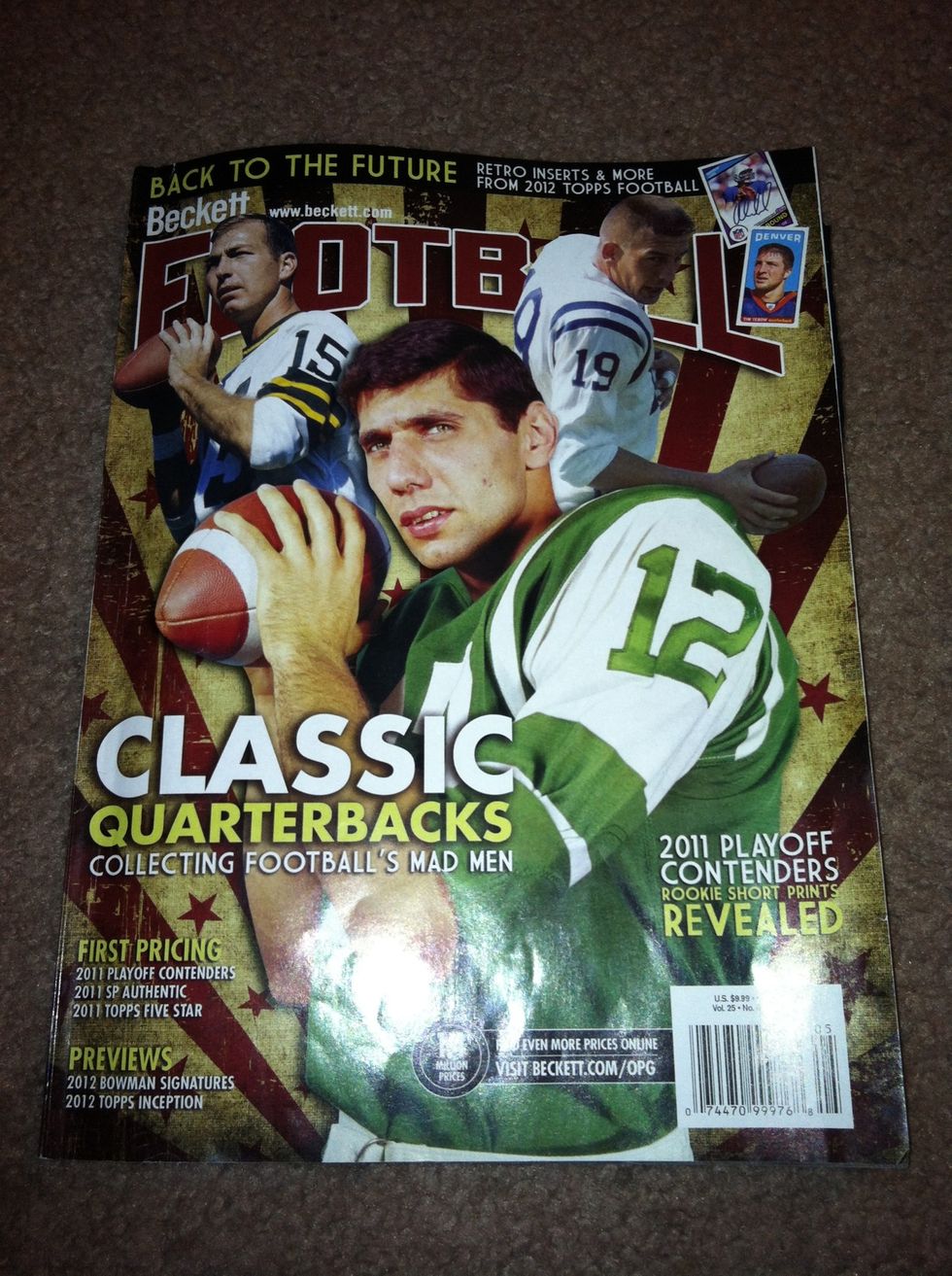
Start by going to a Barnes & Noble or a local trading card dealer and pick up a Beckett price guide for the sport of your choice. This one is for football...obviously...
Note: There are many different price guides out there. I recommend this one as it is most widely referred to by people of this trade. Not all front covers look like this. Issues are updated monthly.
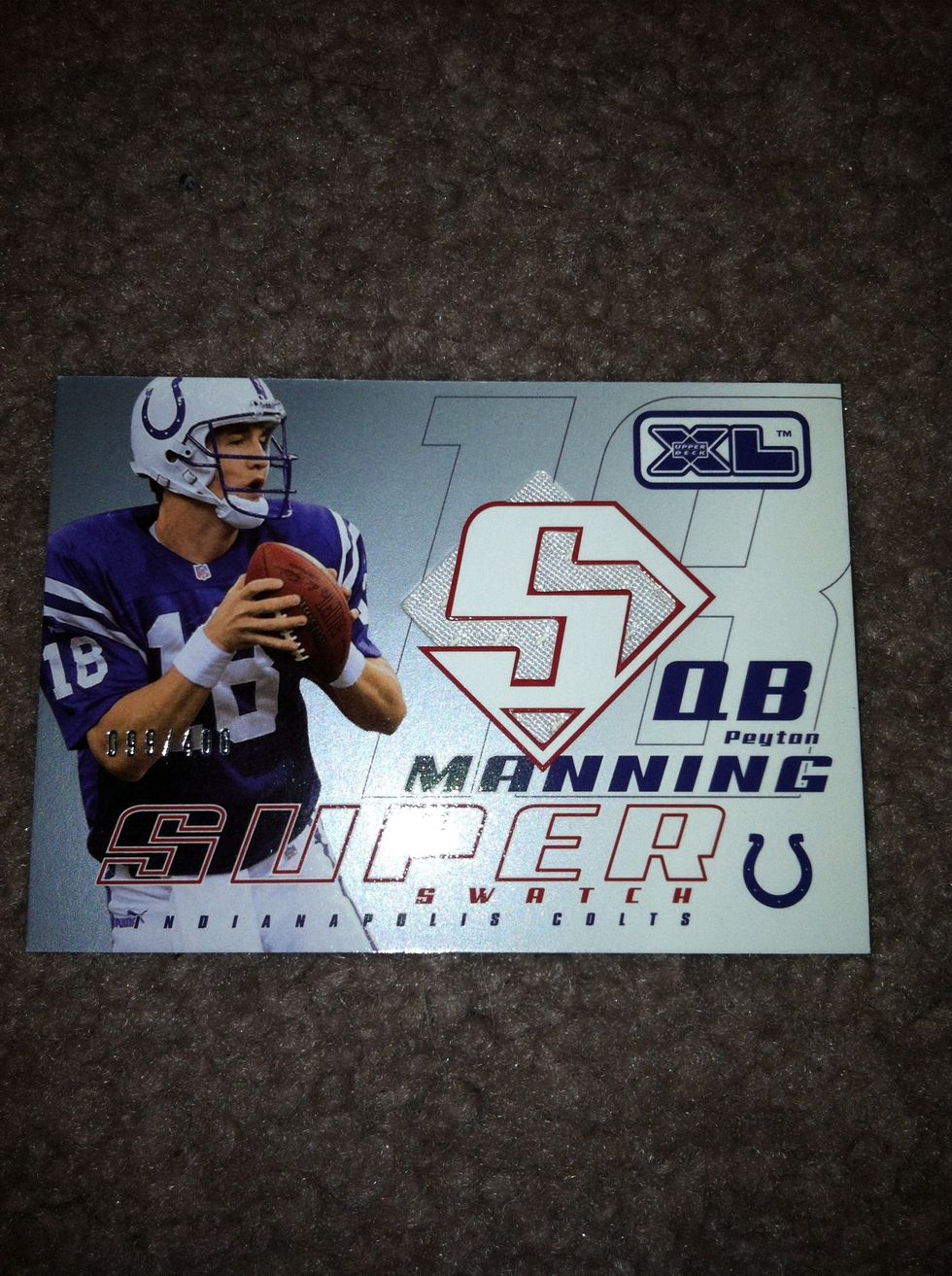
Next, get out the card you would like to try and figure an estimated price for. I will be using this one.
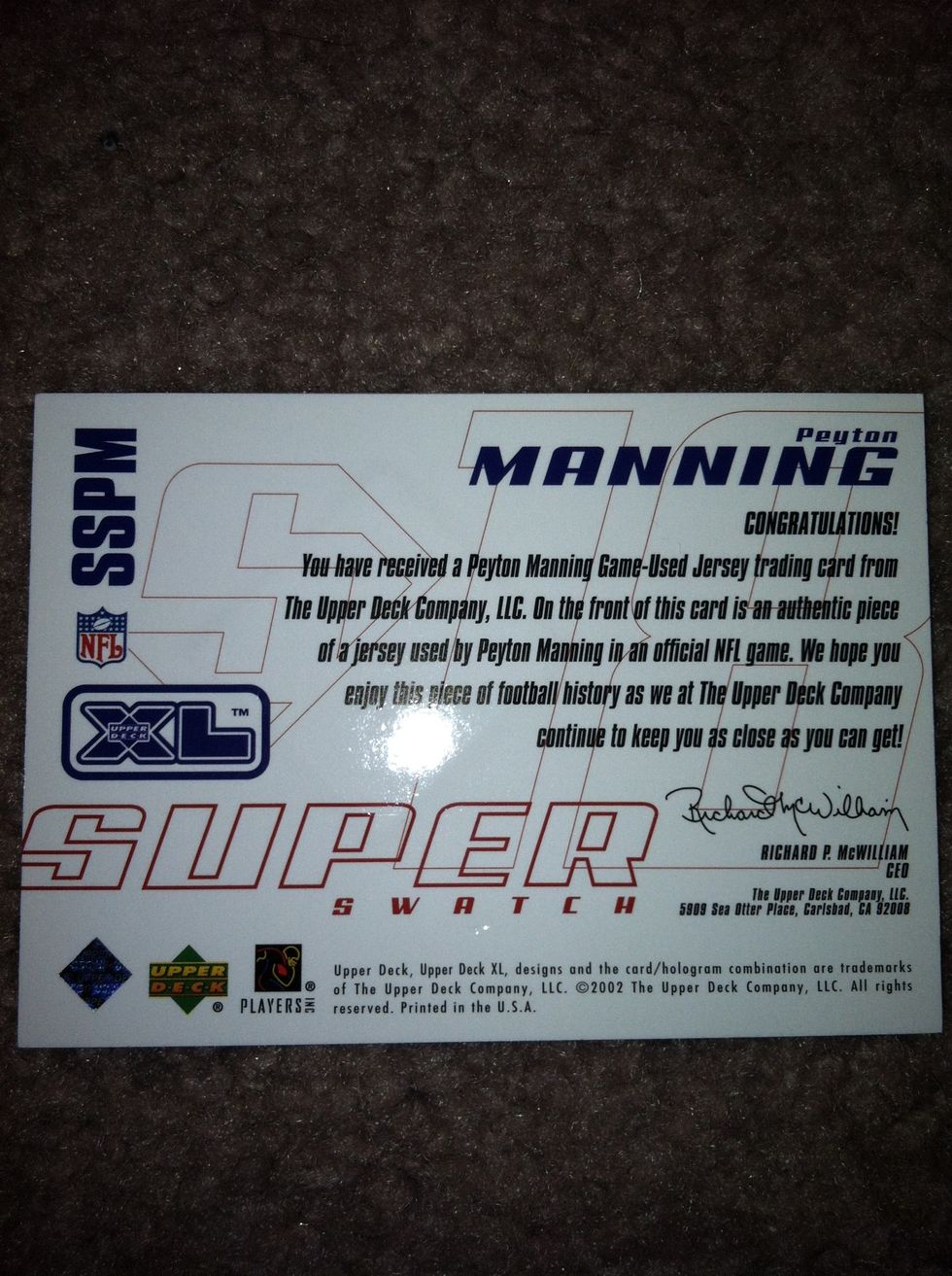
Flip the card over to the back and read the fine print on the bottom of the card. This will tell you the year of the set this card is in and the company that produced it.
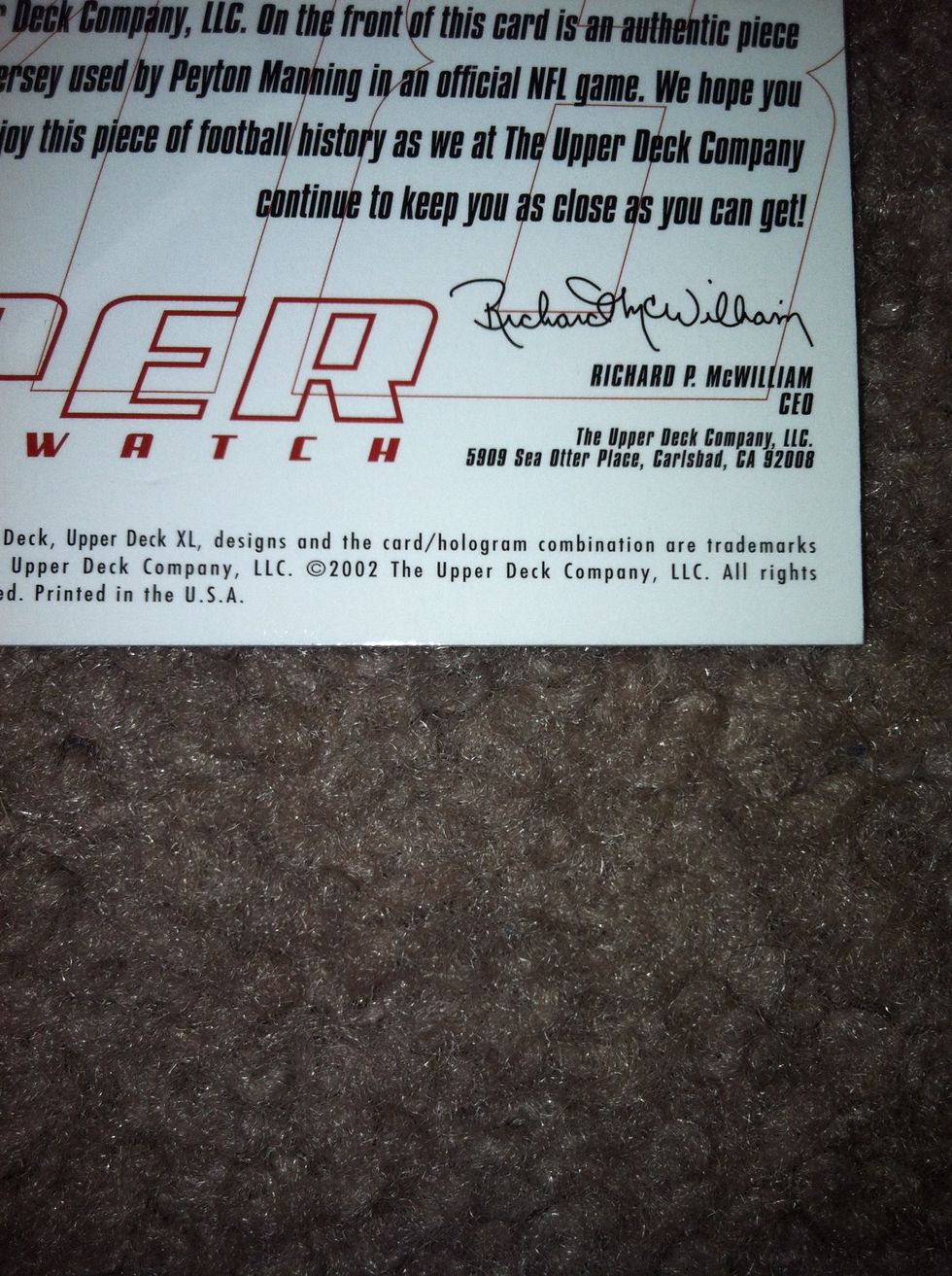
This one is from 2002 and was manufactured by Upper Deck.
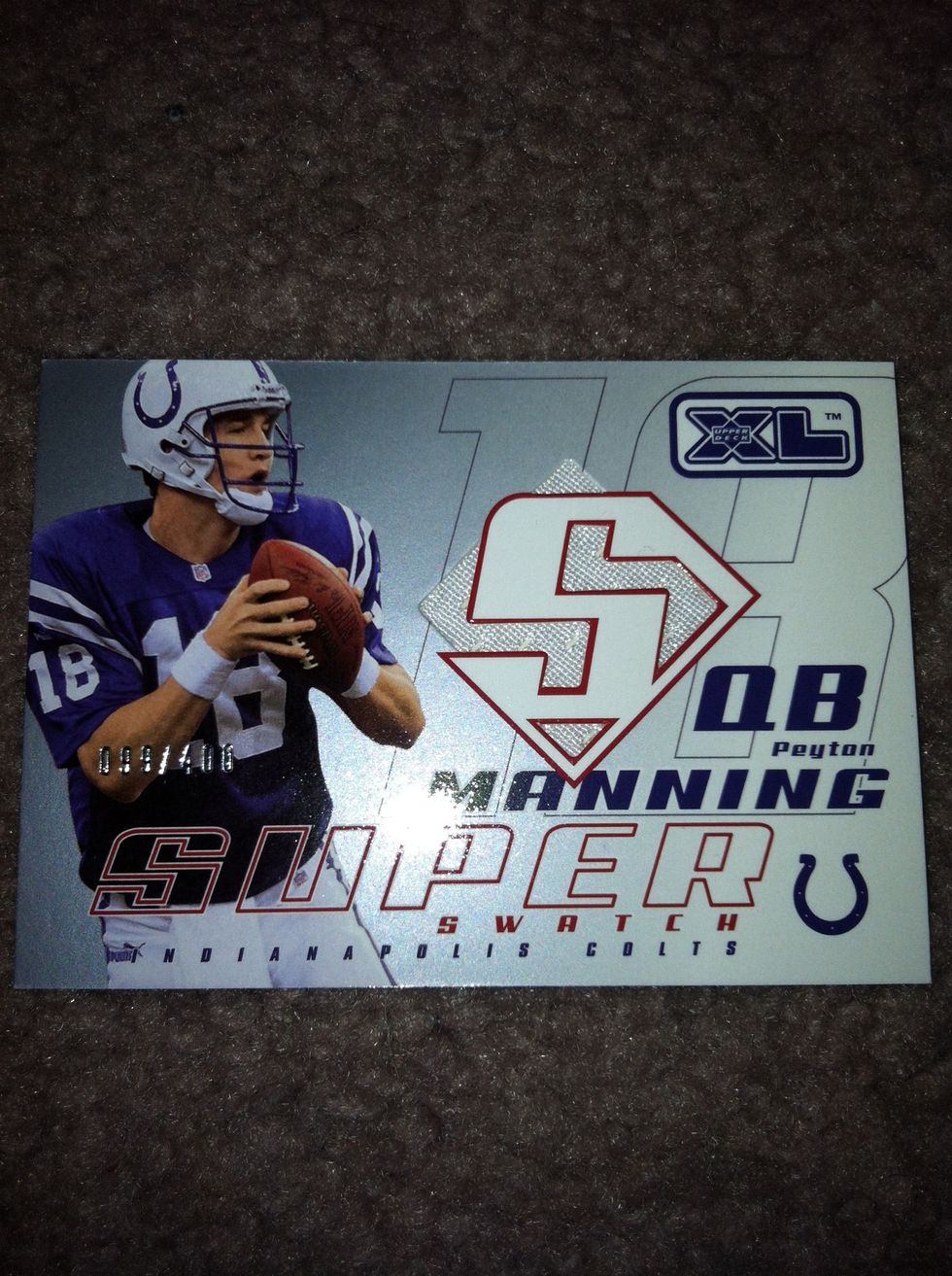
Flip it back over to determine if it has an additional title. This one does. The top right shows "XL" and the bottom of the card says "Super Swatch". We now have "2002 Upper Deck XL Super Swatch".
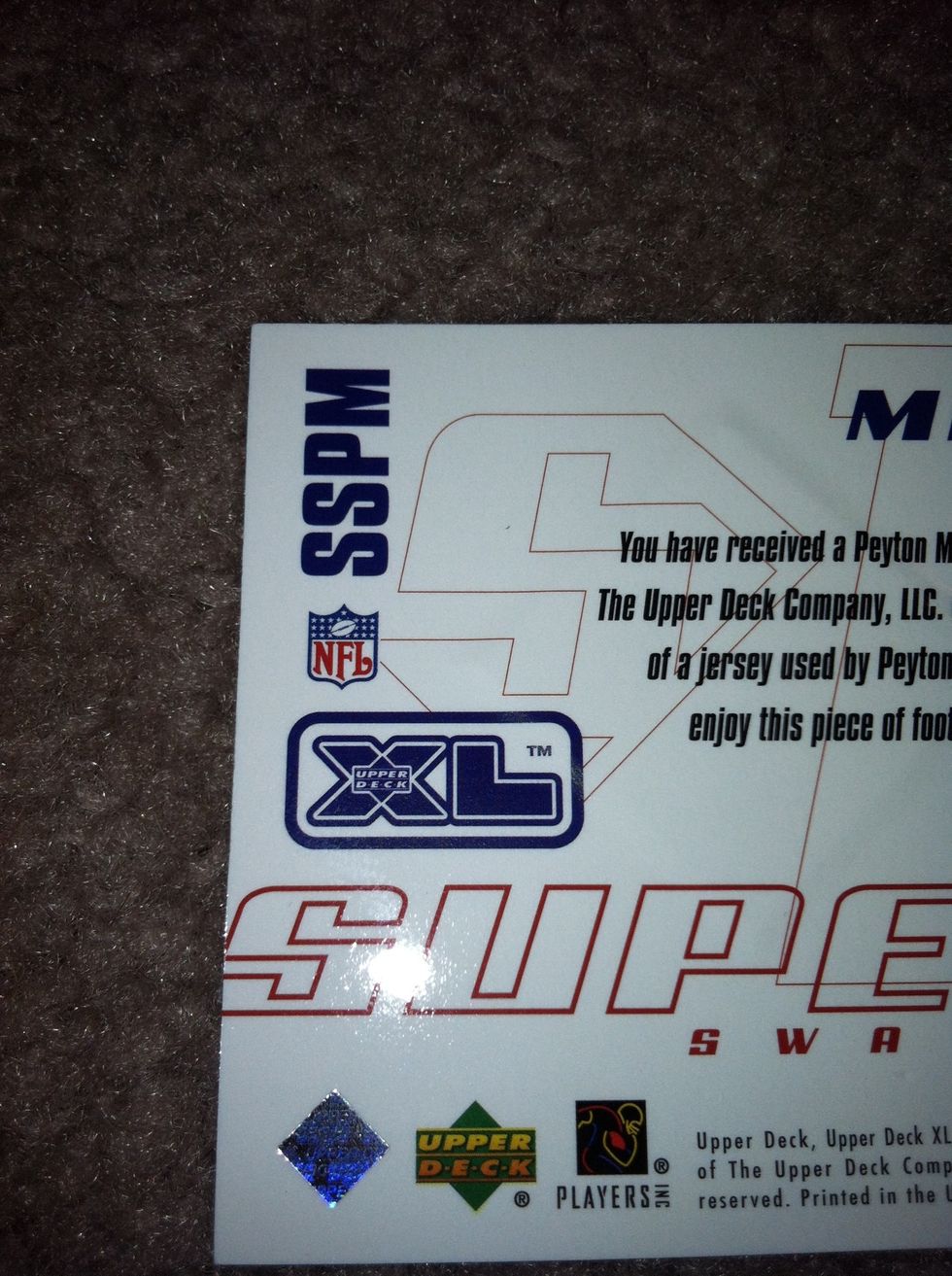
Flip the card one more time. Look in one of the corners (usually) for the number/letter of the card. This one just has the letters "SSPM". We will now look for "2002 upper deck XL super swatch" first.
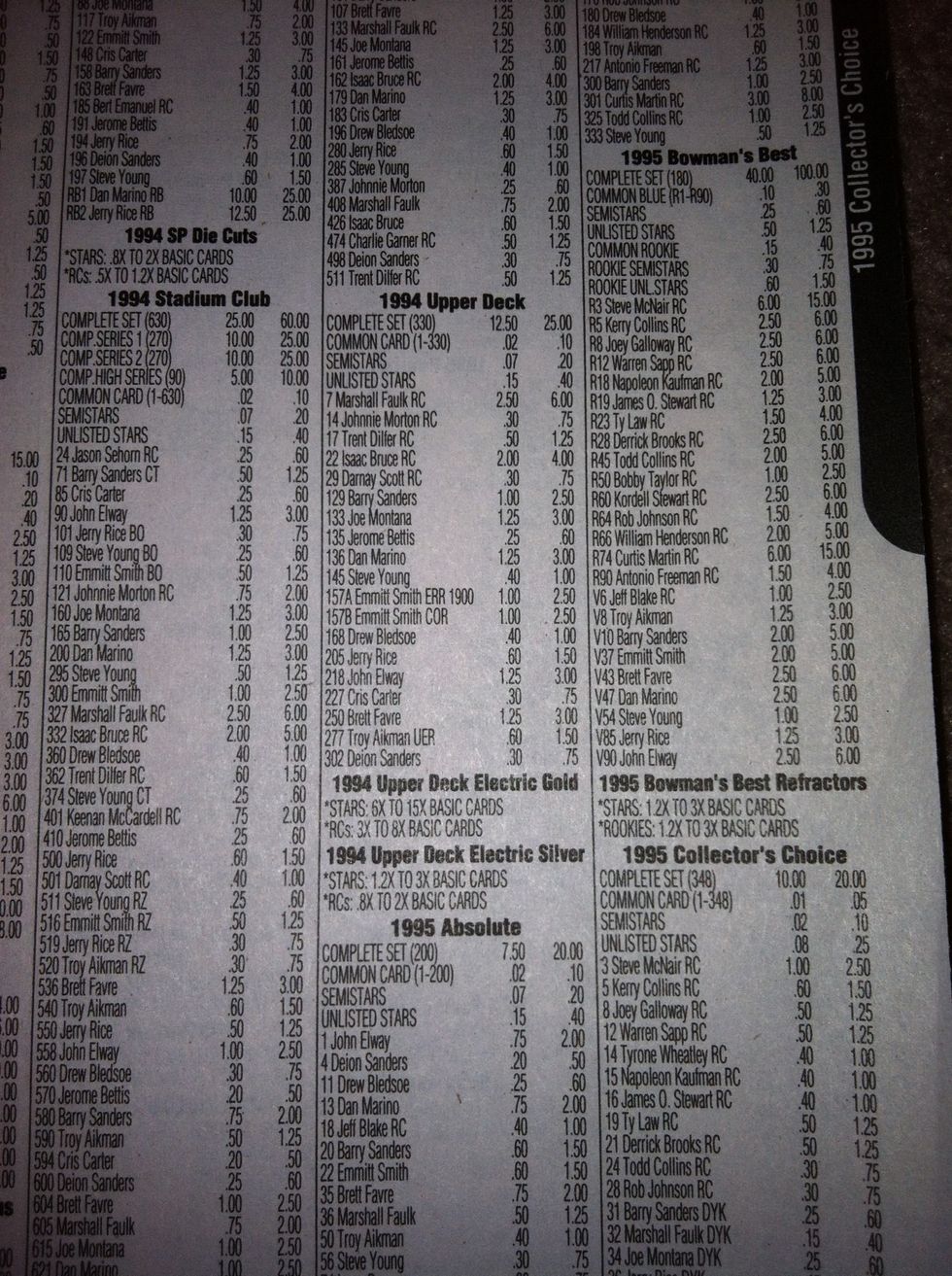
Open up your Beckett and search for the title stated in the previous step. Beckett's are organized by year first and then in alphabetical order of the card title and then by number/letter.
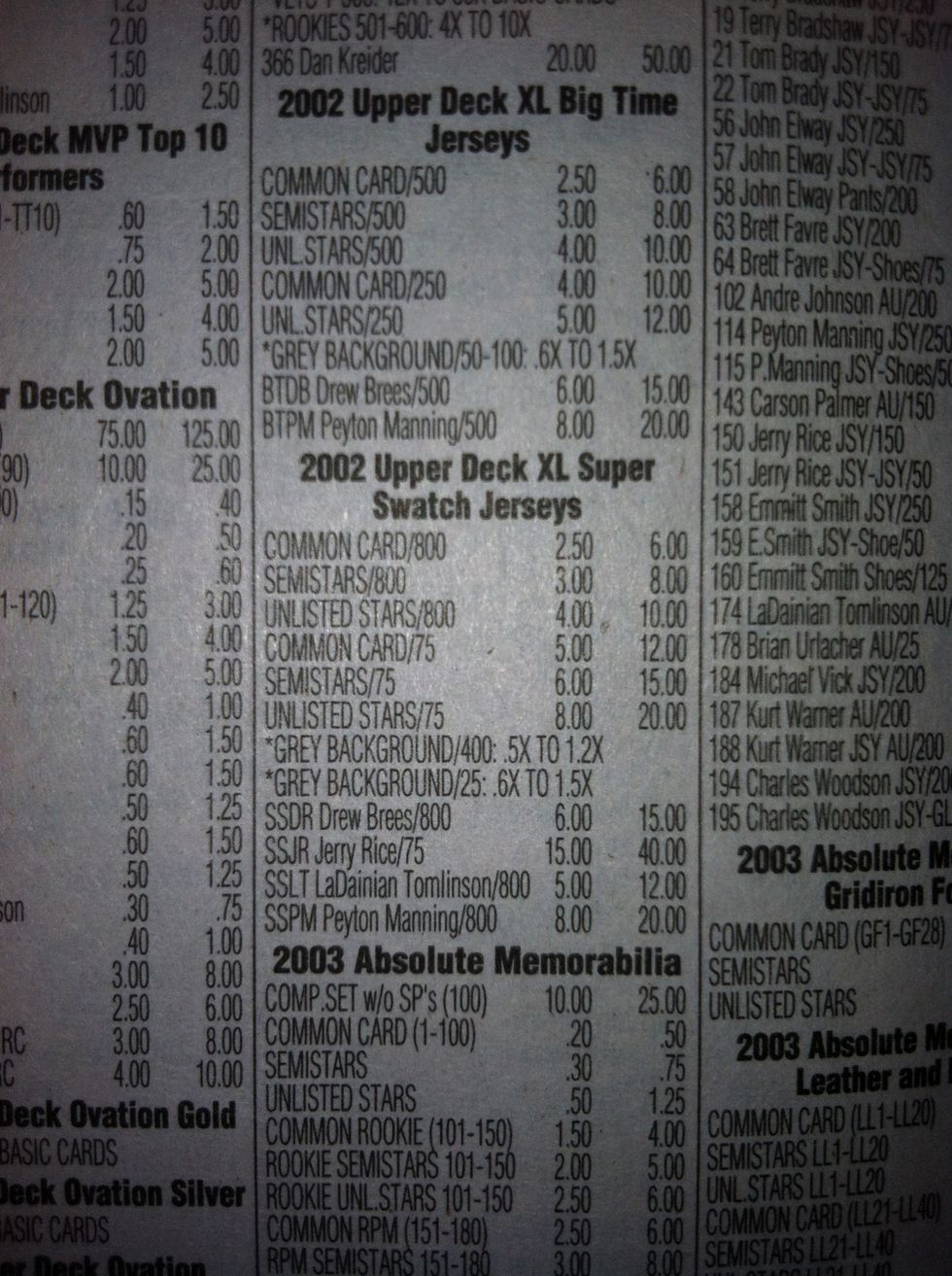
Here it is. We now look for SSPM. There are two prices associated with the card we're looking for. The first is the "low" and the second is the "high". Notice the "/800" after the card?
The low section is the least you would expect to receive and the high is the most. However, the /800 that was listed means the card should be numbered to 800. Meaning only 800 were produced.
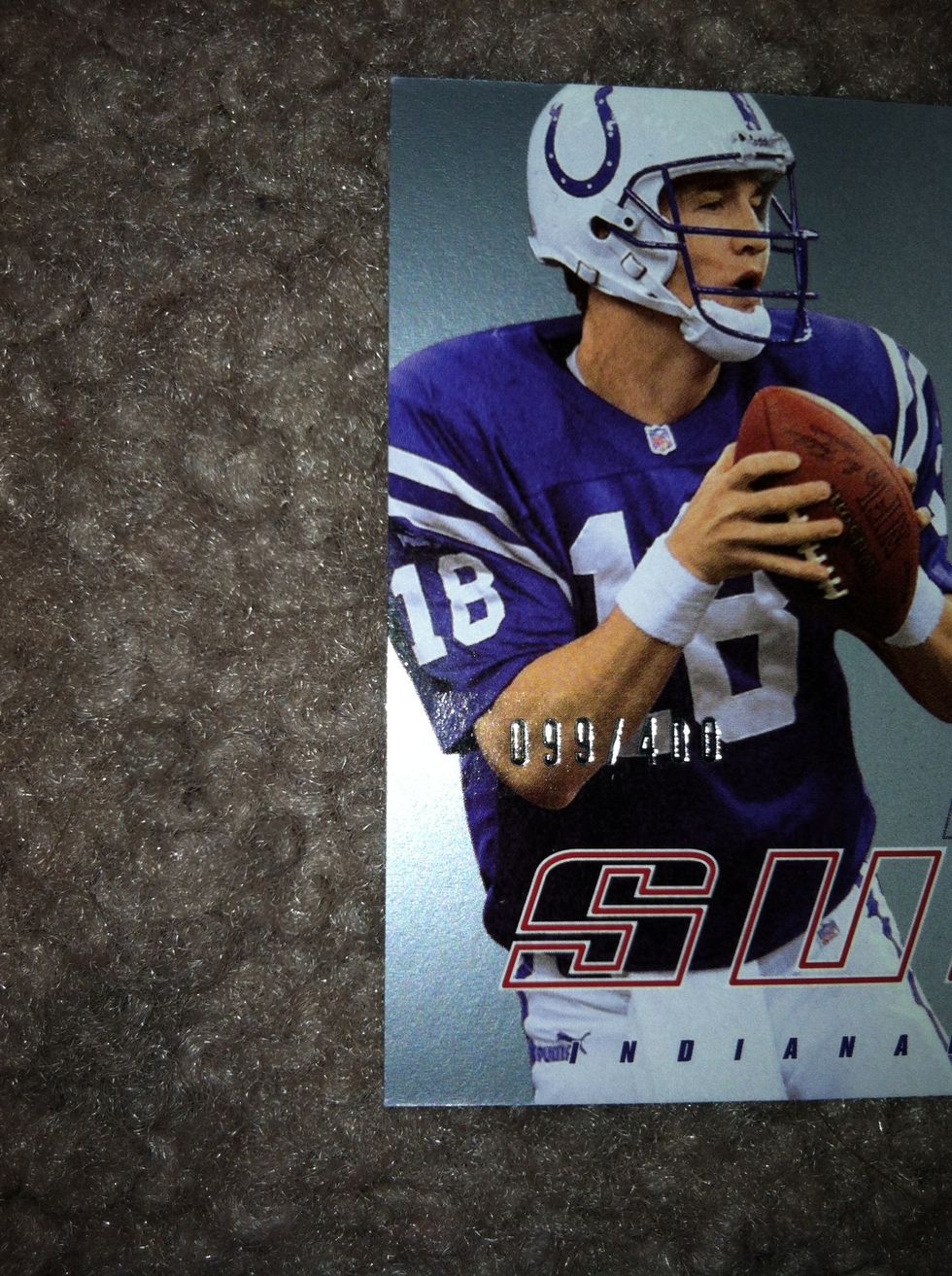
Not all cards are numbered like this. This one is, as you can notice on the front. Labeled in silver print it states "099/400". This means this was the 99th card produced out of 400.
As you may have figured out, the book says it should be numbered to 800 but the card says its 400. So we look back at the price guide.
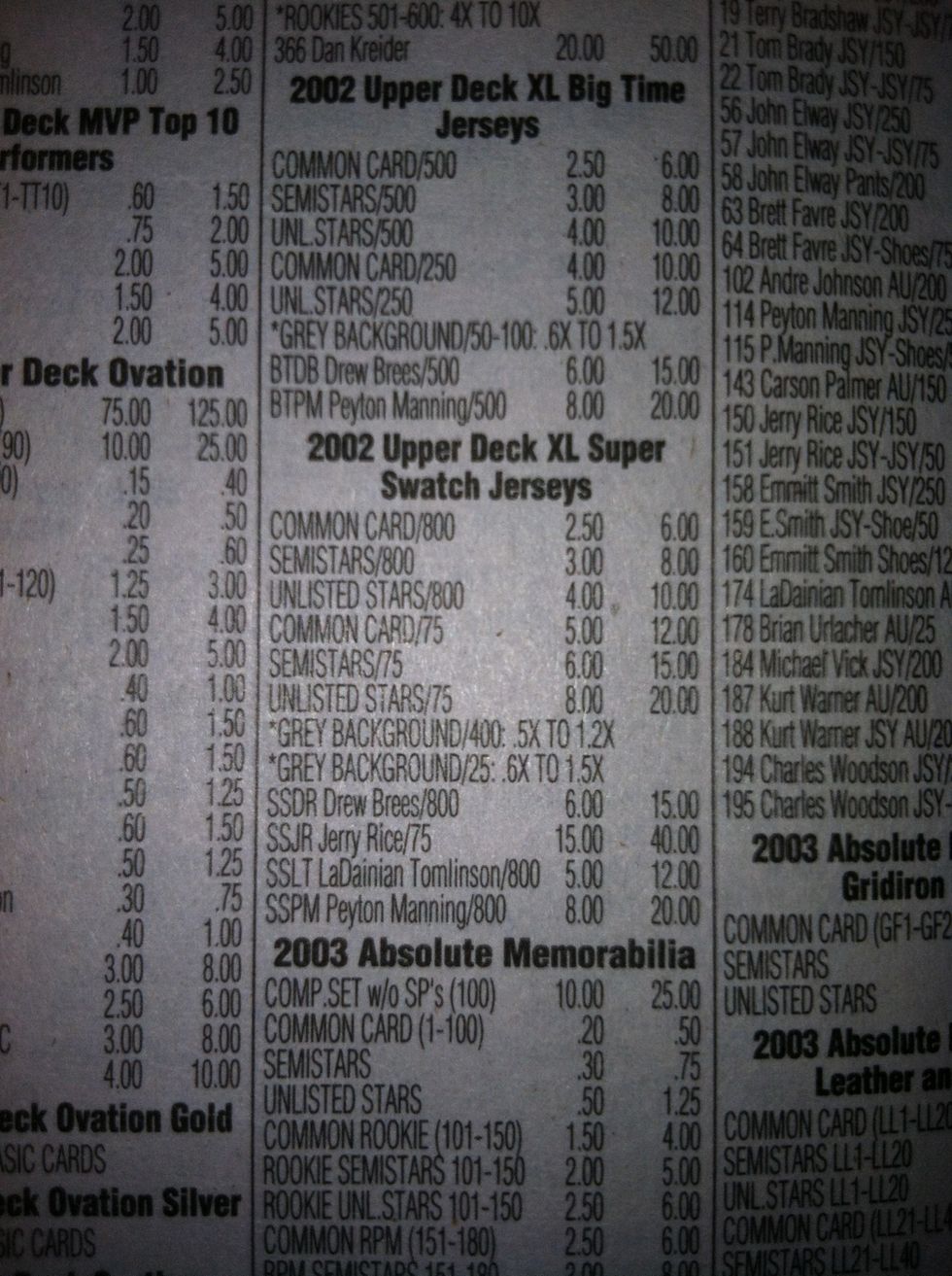
The 7th line down under this section says "grey background/400" .5x to 1.2x. This means if your card has a gray back ground and is numbered to 400, then a 50%-120% mark-up is applied.
The original listing was for $8-$20. The multiplier means that the mark-up can be applied to price. Ex. Using the "high", $20, and using say a .5x increase, my new est. price is $30.
In essence, because this card was produced in a lower amount listed, the price increases. 50% increase on the low and 120% on the high. The new price range is $12 on a bad day and $44 on a good one.
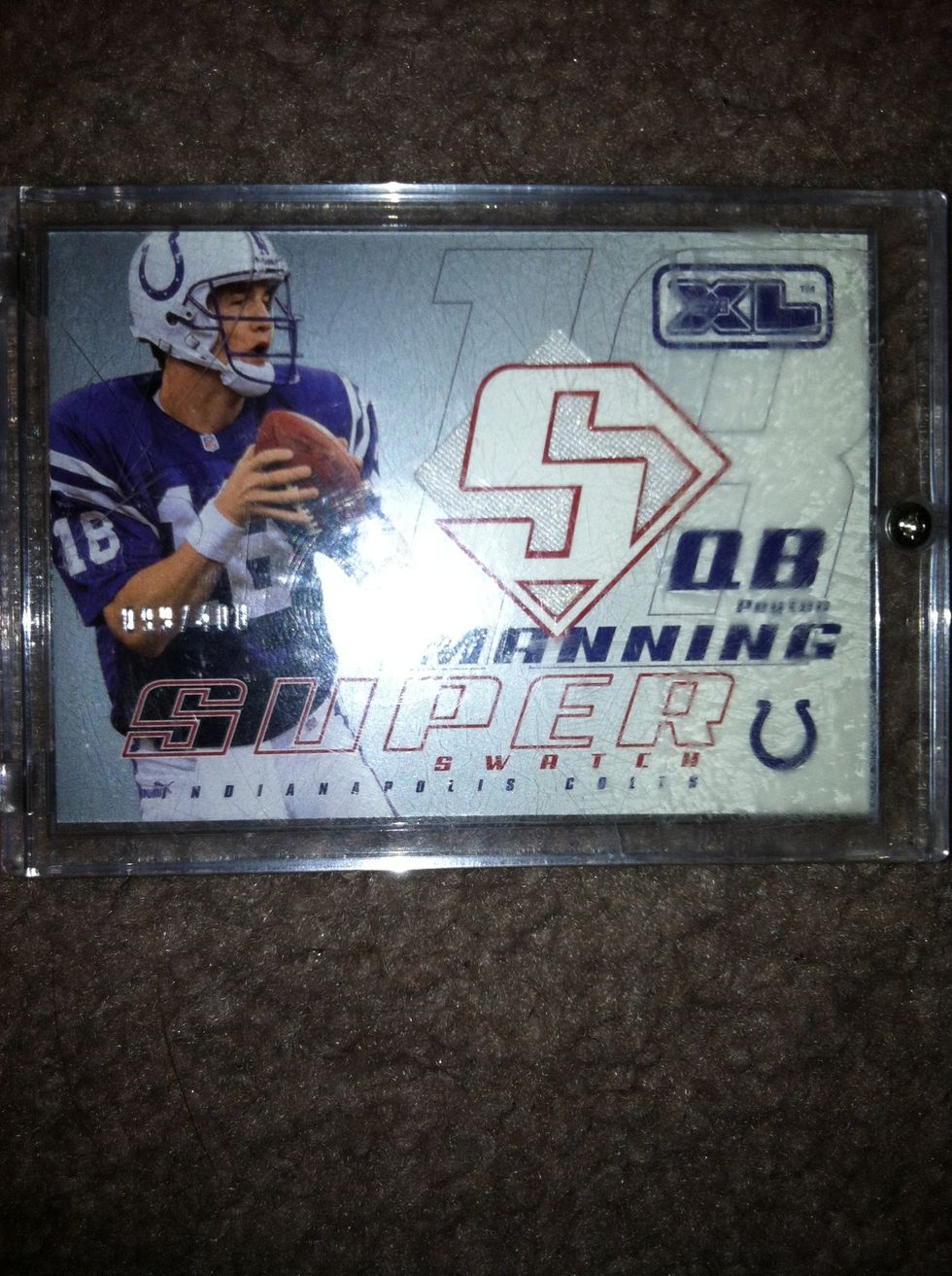
Please note that the condition of the card can make a difference in pricing. From corners to centering and surface condition and edges. It all makes a difference. I keep this one in a plastic case.
Also, getting a card professionally graded by (for example) Beckett's Grading Service can increase the price of the card ten fold (possibly). It depends on whether or not you receive a high grade.
- Beckett card price guide
- Football/Baseball card(s)